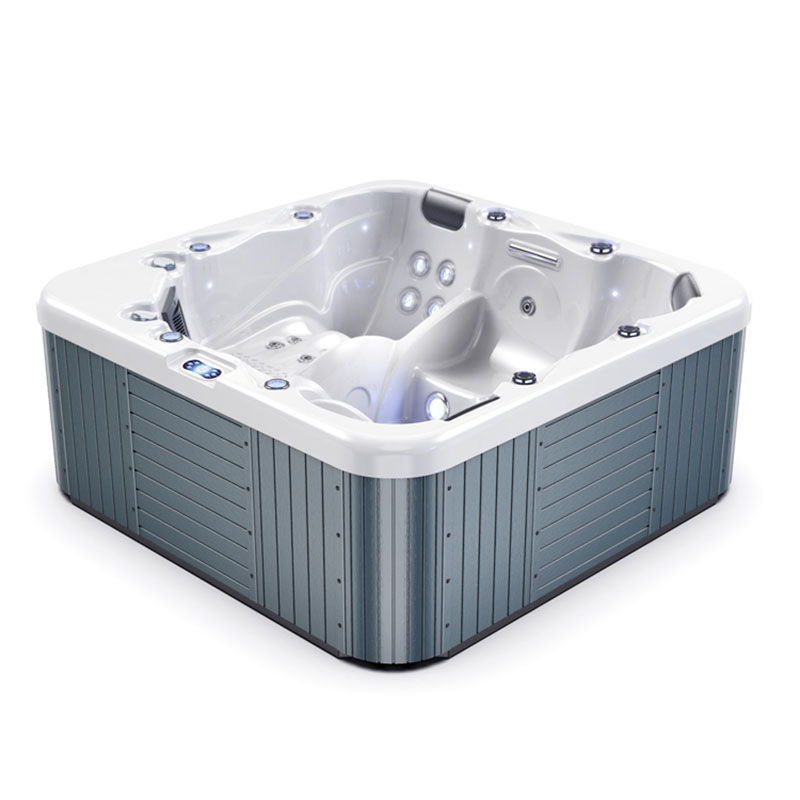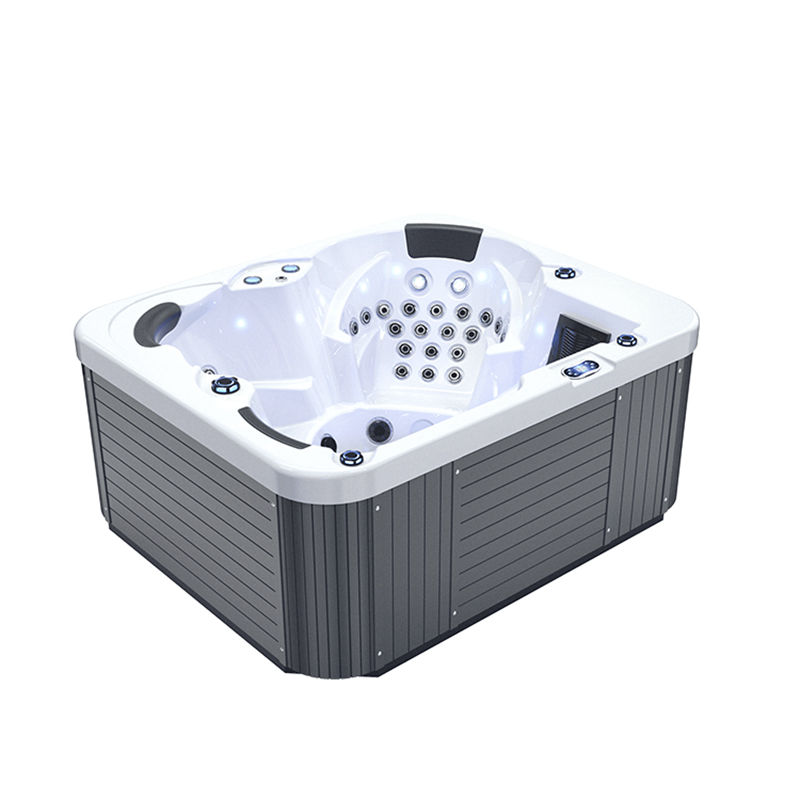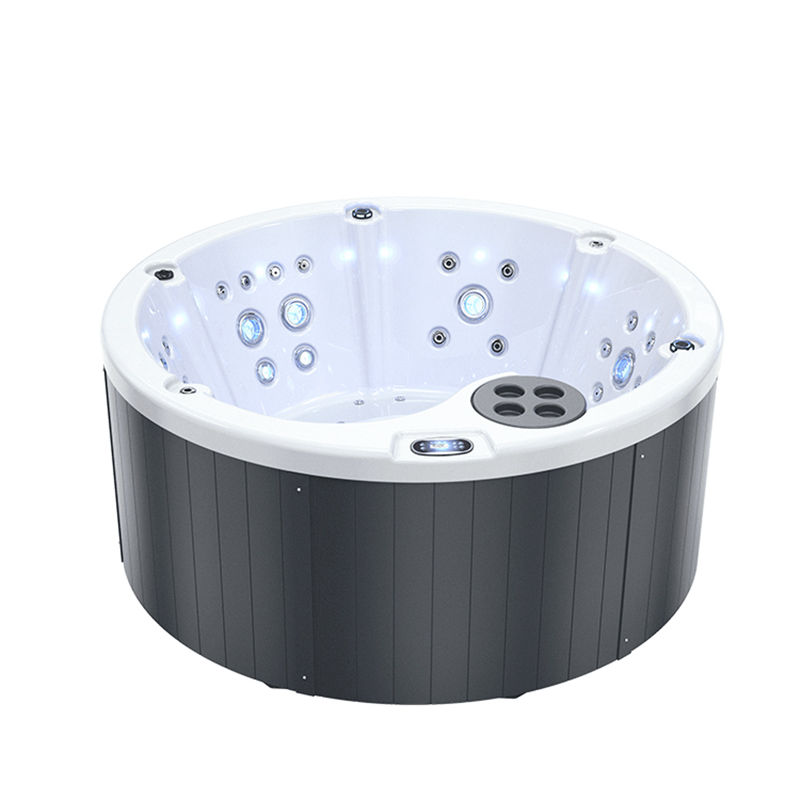As a common disinfectant, bromine is widely used in outdoor spa hot tub water treatment. It is favored by many homes and spas for its advantages of being stable in high temperature environments and less irritating to the skin and eyes. However, although bromine has many advantages, in some cases, the bromine content in the water may be too high, affecting the bathing experience and causing potential health problems. Therefore, understanding how to neutralize bromine in an outdoor spa hot tub and the chemical properties of bromine is crucial for every spa hot tub user.
This article will take a deep look at what can effectively neutralize bromine in an outdoor spa hot tub, explain the mechanism of action of bromine, and under what circumstances it is necessary to neutralize bromine. With this knowledge, you can better manage and maintain the water quality of your outdoor spa hot tub to ensure its safety and comfort.
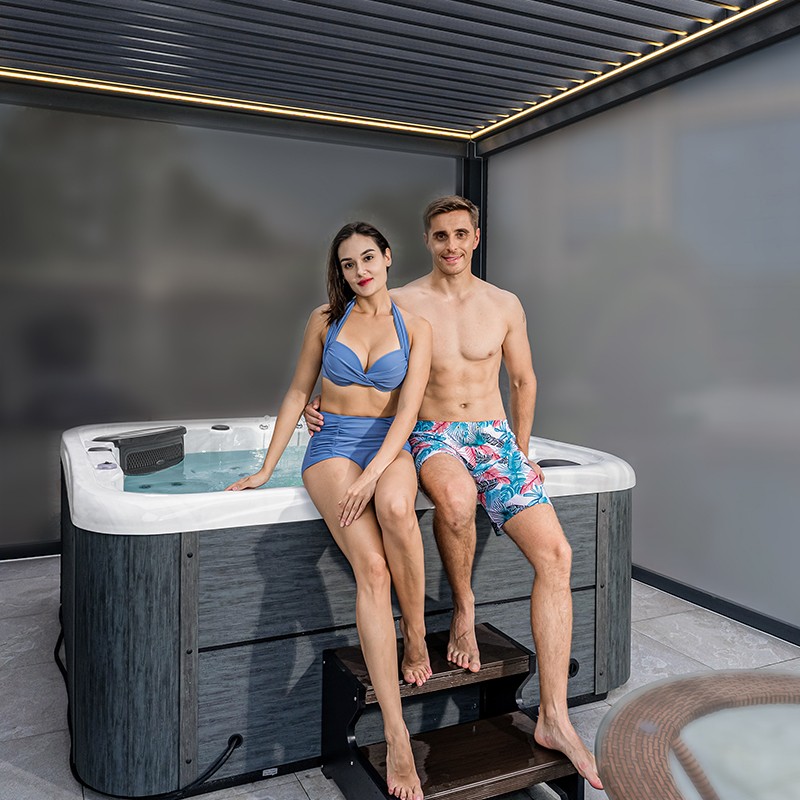
Why Neutralize Bromine in an Outdoor Spa Hot Tub?
First, it is important to understand why you need to neutralize bromine in an outdoor spa hot tub. Generally speaking, the ideal concentration of bromine should be maintained between 3 and 5 ppm. Too high or too low bromine content will affect water quality and user experience. There are several situations where you may need to neutralize or reduce the bromine content in your water:
1. Bromine levels are too high: If the bromine concentration exceeds 5 ppm, it may cause irritation to the skin and eyes, and may also cause the odor in the spa hot tub to become pungent.
2. Poor bathing experience: When the bromine content is too high, the water may become uncomfortable to the touch and the skin may feel dry or tight.
3. Risk of equipment damage: Long-term high concentrations of bromine will accelerate the corrosion of spa hot tub equipment and pipes, shortening their service life.
4. Environmental requirements: When it is time to replace the water in the spa hot tub, if the bromine content is too high, direct discharge may be harmful to the environment. Therefore, the bromine in the water needs to be neutralized before draining.
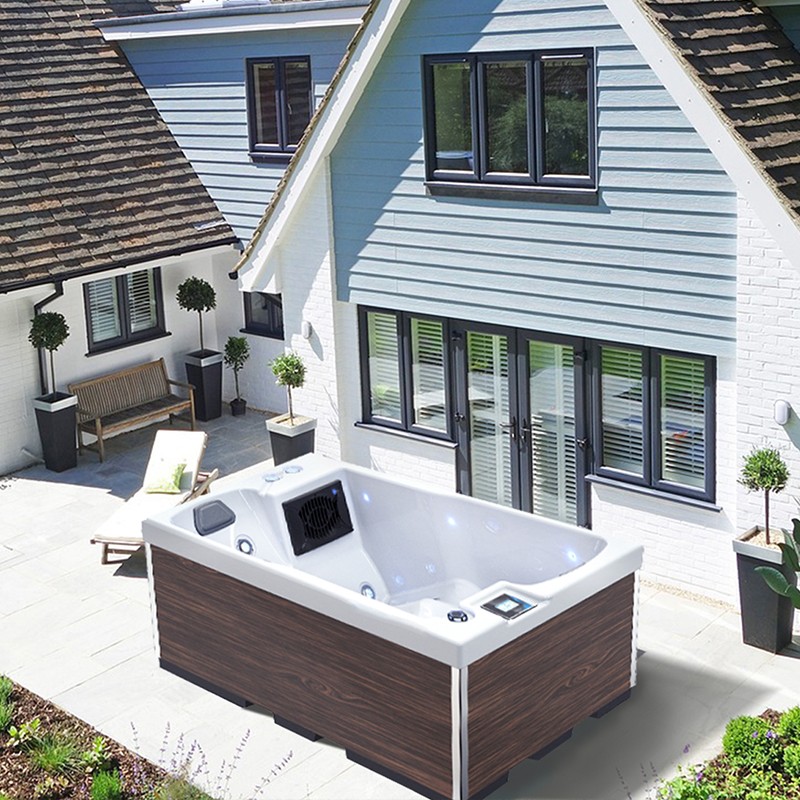
What can neutralize bromine in outdoor spa hot tubs?
There are several methods and chemicals that can neutralize bromine in outdoor spa hot tubs. The following substances can effectively reduce the bromine content chemically and play a neutralizing role in spa hot tubs.
1. Hydrogen Peroxide
Hydrogen peroxide is a common chemical that is often used for cleaning and disinfection. It can also effectively neutralize bromine. In the water treatment process, hydrogen peroxide, as a strong oxidant, will quickly react with the bromine in the outdoor spa hot tub water, destroying its activity, thereby reducing the bromine content in the water.
Working principle:
● Hydrogen peroxide converts bromine into harmless bromide through a redox reaction with bromine, thereby reducing the concentration of active bromine in the water.
How to use:
● Add an appropriate amount of hydrogen peroxide to the water in the outdoor spa hot tub. The specific amount depends on the bromine concentration in the water and the volume of the water.
● After use, it is recommended to test the bromine content regularly to ensure that it has dropped to the ideal range.
Precautions:
● The amount of hydrogen peroxide used must be properly controlled. Excessive hydrogen peroxide may cause other problems in the water.
● After using hydrogen peroxide, it is recommended to use a water quality test tool to ensure that the water quality has returned to normal.
2. Sodium Thiosulfate
Sodium Thiosulfate is a chemical commonly used to neutralize chlorine and bromine. It can quickly and effectively reduce the bromine content in water. In the management of water bodies such as swimming pools and spa hot tubs, sodium thiosulfate is a common bromine neutralizer.
Working principle:
● Sodium thiosulfate reacts chemically with bromine in water, converting active bromine into bromide, thereby reducing the concentration of bromine.
How to use:
● Accurately measure the required amount of sodium thiosulfate according to the volume of water and the current bromine concentration, and add it to the spa hot tub.
● Sodium thiosulfate is usually sold in powder or solution form and should be added according to the instructions for use.
Advantages:
● Rapid reaction and obvious effect.
● Commonly used in water treatment of swimming pools and spa hot tubs, it has been widely recognized.
Notes:
● After adding sodium thiosulfate, it is recommended to use a test device to test the bromine content to ensure that it has dropped to the appropriate range.
● Be careful when adding to avoid excessive use, which will cause the bromine content to be too low and affect the disinfection effect of the water.
3. Activated Carbon Filter
Activated carbon filters can also be used to neutralize and reduce chemicals in water, including bromine. Through the adsorption of activated carbon, bromine in the water will be filtered out, thereby achieving the purpose of reducing the bromine concentration.
Working principle:
● Activated carbon has a porous structure and can effectively adsorb bromide ions in water and remove them from the water body.
How to use:
● Install the activated carbon filter into the filtration system of the outdoor spa hot tub. As the water circulates, bromine is gradually adsorbed by the filter.
● Replace the activated carbon regularly to ensure its adsorption effect.
Advantages:
● No need to add chemicals, environmentally friendly and safe.
● Can filter out other impurities in the water and improve water quality.
Notes:
● The filtration speed is relatively slow, and it may take a long time to significantly reduce the bromine content.
● Activated carbon needs to be replaced regularly to maintain the best adsorption effect.
4. Natural evaporation
In some cases, if the bromine content is slightly too high, the bromine concentration in the water can be reduced by natural evaporation. When bromine is exposed to sunlight and air, it will gradually decompose and evaporate into the air, thereby reducing the bromine content in the outdoor spa hot tub water.
How it works:
● Bromine decomposes when exposed to ultraviolet light (sunlight) and gradually disappears from the water.
How to use:
● If the bromine content is slightly too high, you can open the lid of the spa hot tub and expose the water to the air. The sun can help decompose the bromine.
● After a few hours to a few days of exposure, the bromine content will naturally decrease.
Advantages:
● No need to add chemicals, the method is simple and natural.
● Especially suitable for situations where the bromine content is not seriously exceeded.
Disadvantages:
● It takes a long time to show the effect.
● If the ambient temperature is low, the evaporation rate may be slower.
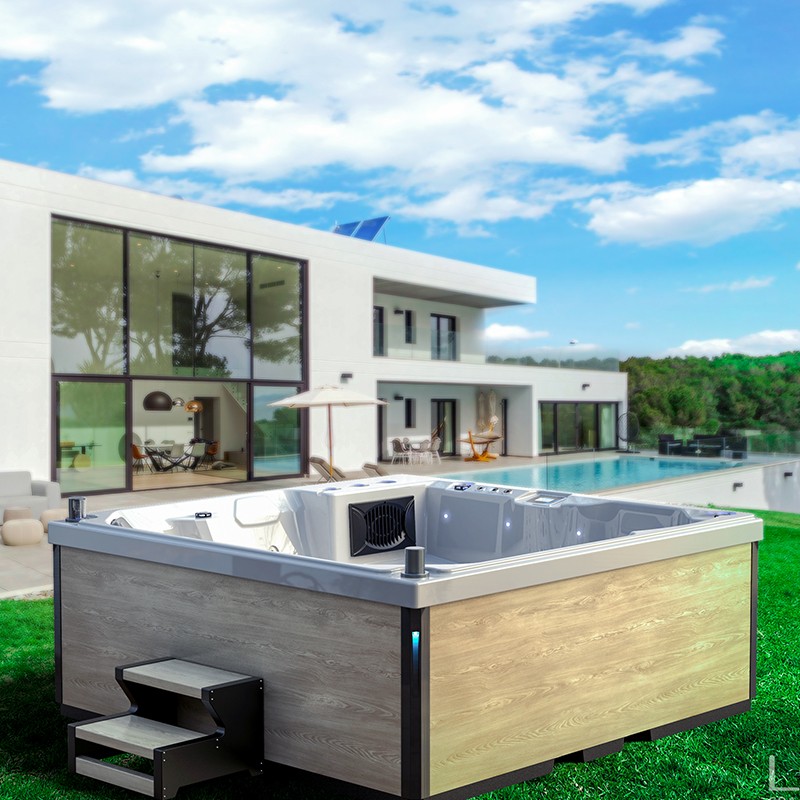
How to prevent the bromine content in the outdoor spa hot tub from being too high?
While it is important to know how to neutralize bromine in water, preventing bromine levels from becoming too high is the best strategy for maintaining outdoor spa hot tub water quality. With a few simple maintenance measures, you can ensure that the bromine content in your water always remains within the ideal range and avoid frequent neutralization operations.
1. Test water quality regularly
Use test strips, liquid reagents, or digital testers to regularly test outdoor spa hot tub water quality, especially bromine content. This helps to detect fluctuations in bromine content early and take timely action to make adjustments.
2. Control the amount of bromine tablets used
Bromine tablets are usually released slowly through a floating dispenser to maintain the bromine concentration in outdoor spa hot tub water. If you find that the bromine content is too high, you can reduce the amount of bromine tablets used or remove the dispenser when not in use.
3. Control water temperature
High temperatures accelerate chemical reactions, resulting in bromine consumption and concentration fluctuations. Therefore, when the outdoor spa hot tub is not in use, the water temperature can be appropriately lowered to delay the release and volatilization of bromine.
4. Use the right water balancer
Fluctuations in pH and alkalinity can affect the effectiveness of bromine, so regularly adjusting water parameters to ensure a balanced pH and mineral content in the water can help avoid abnormal increases in bromine content.
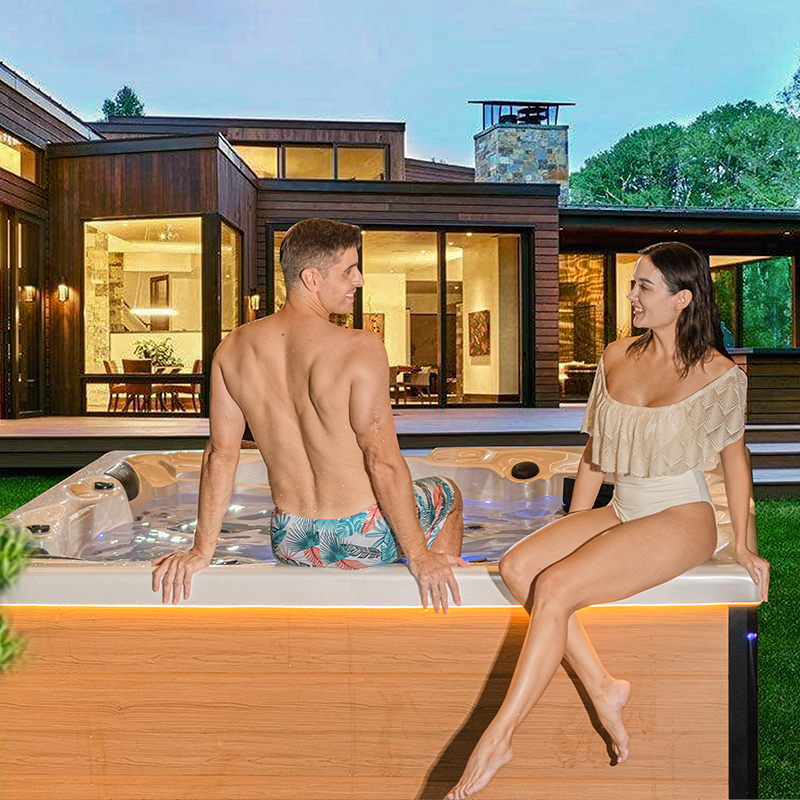
Partner with Guangzhou HuanTong, one of the top manufacturers of outdoor spas in China, to elevate your product lineup. We offer CE and ISO-certified hydrotherapy products at attractive wholesale prices. All our units are tested for performance and durability. Choose from our vast catalog or request fully customized models. As your long-term supplier, we provide special prices for bulk orders and marketing promotions. Get in touch today for a detailed quote.


